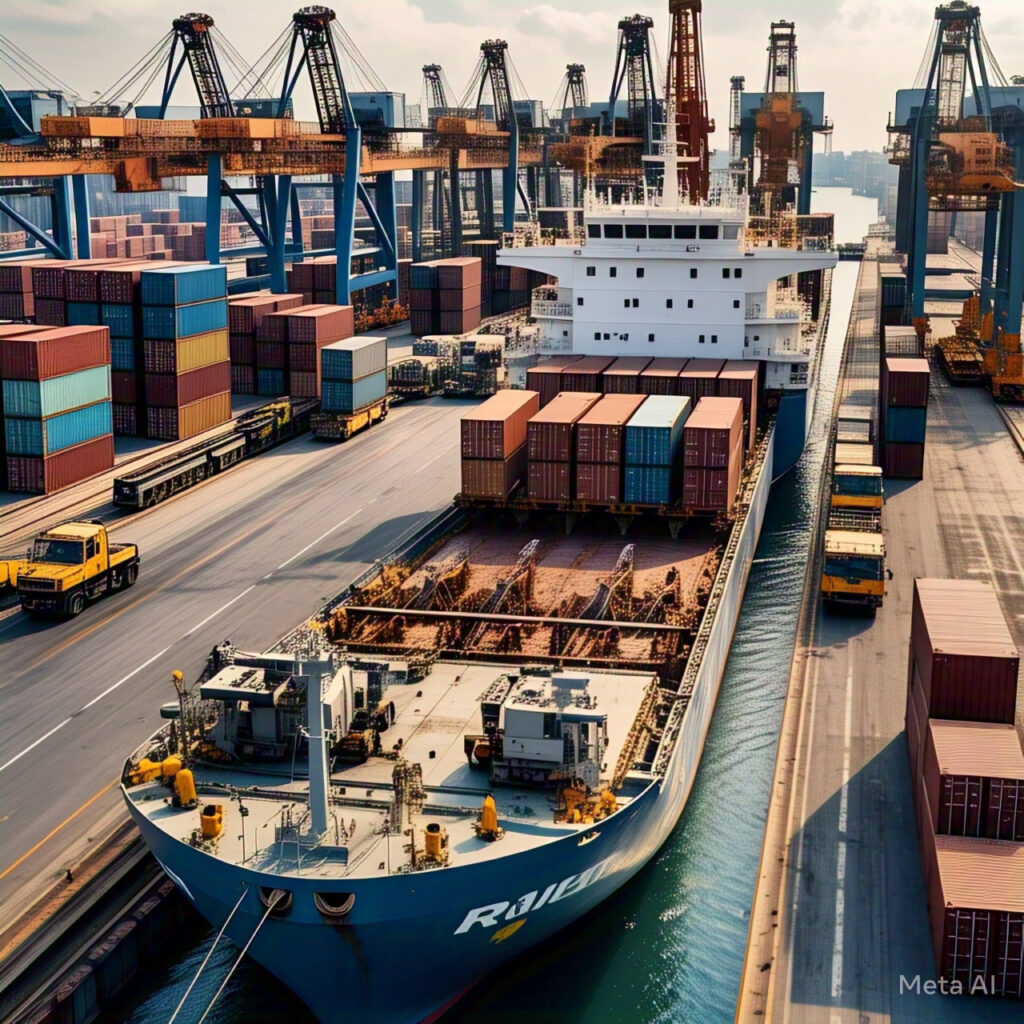
The global trade industry is at a pivotal juncture, shaped by technological advancements, geopolitical shifts, and evolving consumer demands. Here are some key trends and developments likely to shape its future:
1. Digital Transformation and E-commerce Growth
- Accelerated Digitization: The adoption of digital tools, blockchain, and AI for supply chain optimization, customs clearance, and trade finance will continue to grow.
- E-commerce Expansion: Cross-border e-commerce is expected to surge, driven by consumer demand for convenience and access to global products. Platforms like Amazon, Alibaba, and Shopify will play a central role.


2. Supply Chain Resilience
- Diversification: Companies are likely to diversify their supply chains to reduce dependence on single regions, particularly in light of disruptions like the COVID-19 pandemic and geopolitical tensions.
- Nearshoring and Reshoring: More businesses may move production closer to home markets (nearshoring) or bring it back entirely (reshoring) to mitigate risks.


3. Sustainability and Green Trade
- Carbon-Neutral Supply Chains: There will be increasing pressure on companies to adopt sustainable practices, including reducing carbon emissions and using eco-friendly materials.
- Circular Economy: The shift toward recycling, reusing, and reducing waste will influence trade flows, particularly in industries like electronics, textiles, and plastics.


4. Geopolitical Shifts and Trade Policies
- Regionalization: Trade blocs like the Regional Comprehensive Economic Partnership (RCEP) and the African Continental Free Trade Area (AfCFTA) will gain prominence, reducing reliance on global multilateral systems.
- US-China Tensions: Ongoing geopolitical tensions will continue to shape trade policies, with companies diversifying away from China and exploring alternatives like India, Vietnam, and Mexico.
- Trade Wars and Tariffs: Protectionist policies and tariffs may persist, impacting global trade dynamics.
5. Technological Innovations
- Automation and Robotics: Increased use of automation in manufacturing and logistics will improve efficiency but may disrupt labor markets.
- AI and Predictive Analytics: AI will play a larger role in demand forecasting, inventory management, and risk assessment.
- 3D Printing: Additive manufacturing could reduce the need for certain types of cross-border trade, particularly for customized or small-batch products.


6. Regulatory Changes and Compliance
- Data Privacy and Security: Stricter regulations around data protection (e.g., GDPR) will impact how companies handle cross-border data flows.
- Trade Compliance: Increasingly complex trade regulations will require businesses to invest in compliance tools and expertise.

7. Emerging Markets
- Africa and Southeast Asia: These regions are expected to become major hubs for trade and investment due to their growing populations, urbanization, and improving infrastructure.
- Digital Infrastructure: Investments in digital infrastructure in emerging markets will facilitate greater participation in global trade.

8. Pandemic Recovery and Health Security
- Vaccine and Medical Supply Chains: The pandemic has highlighted the importance of resilient supply chains for critical goods, leading to potential restructuring in this sector.
- Health and Safety Standards: Stricter health and safety protocols may become a permanent feature of global trade.

9. Consumer Behavior Shifts
- Demand for Transparency: Consumers are increasingly demanding transparency in supply chains, pushing companies to adopt ethical sourcing and production practices.
- Personalization: The demand for personalized products will drive changes in manufacturing and logistics.
10. Energy Transition
- Renewable Energy Trade: The global shift toward renewable energy will create new trade opportunities in solar panels, wind turbines, and battery technologies.
- Energy Independence: Countries may prioritize energy independence, impacting traditional energy trade flows.


Challenges Ahead:
- Inflation and Economic Uncertainty: Rising inflation and economic instability could dampen global trade growth.
- Climate Change: Extreme weather events and climate-related disruptions will pose risks to supply chains.
- Labor Shortages: Aging populations and labor shortages in key regions could impact production and logistics.
In summary, the global trade industry is poised for significant transformation, driven by technology, sustainability, and geopolitical shifts. Companies that adapt to these changes and invest in innovation, resilience, and compliance will be best positioned to thrive in the evolving landscape.